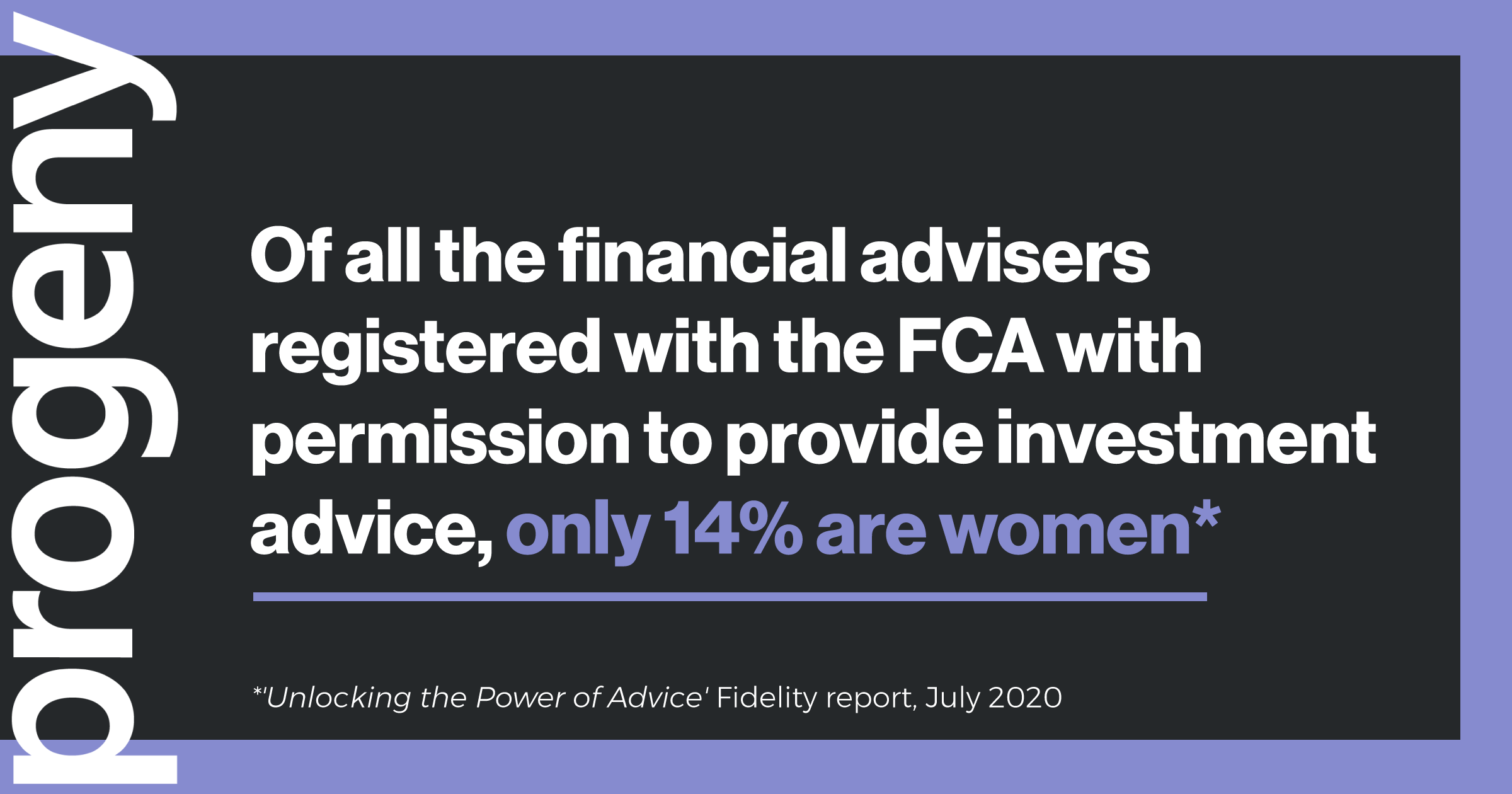

‘Unlocking the Power of Advice’, Fidelity’s report in their Financial Power of Women series, shows one key statistic that really hit me hard. They found that of all registered with the FCA with permission to provide investment advice, only 14% were female financial advisers.
The reason it had such an impact on me is because I remember sitting in a board meeting, in 2001, at what was then the first “run-by-women-for-women” independent financial advice firm discussing how difficult it was to recruit female advisers. One of the reasons for this was that, as I recall, just 14% of IFAs at the time were women. It would seem that almost 20 years on, we’ve made no progress at all.
Shifting the dial
Right across the industry and beyond, of course, women make up a much bigger proportion of the workforce than this. In management teams and boardrooms, the dial has shifted, or been made to shift. At Progeny, 5 of our 12 executive board members are women, and we have a dedicated Women in Professional Services forum with the aim of building a community of female spokespeople and thought leaders within the business.
We can also compare the status quo with the financial advice industry of 20 years ago and see that some progress is being made towards greater equality. For example, businesses are beginning to publish pay gap data and many, like us, have committed to the Women in Finance Charter. The financial media have lent their support and scrutiny and joined in with a whole host of women-focused financial advice awards.
But as the report data shows us, the struggle is clearly far from over and there is a great deal of work still to be done. I have worked as an IFA for almost 30 years, 20 of these in women-focused businesses, and these are my personal observations on the issues we need to address.
How to attract female talent
Firstly, we need to attract women into financial advice. It’s up to all of us to build a profession which is respected and coveted so we continue to attract bright, young female talent. Then we need to foster a culture and implement businesses practices which will nurture and promote that talent from day one and right the way through a long and fulfilling career, showing what a rewarding profession it can be.
Navigating the ‘sticky middle’
We need to get better at not only attracting more talented female financial advisers into the industry but – more crucially in many ways – retaining them. There is plenty of evidence showing that at entry level there are healthy numbers of women coming into the profession but, by middle-tier management, they begin to fall away or simply stop progressing.
This is what I call the ‘sticky middle’. Despite well-meaning policies and good numbers of high-calibre female advisers at entry level, many of them just do not survive in the industry past this mid-stage – not because they are not capable but because they opt out of a culture that does not suit them or meet their needs.
How we can address sexism
We are still a primarily male-dominated industry and some parts of it remain pretty sexist. When I was younger, I didn’t want to admit I could not compete on my talent alone, I didn’t want special treatment just because I was a woman. I felt I was capable enough to fight my own battles. But getting promoted is not always about talent – it’s about power, connections and how you fit in with the prevailing corporate culture. As humans we favour and select people who look and think like us. So without more women in senior roles in advice firms, it’s less likely we will promote more women to senior roles in advice firms. And so the status quo continues. We need to find a way to break this cycle.
An alternative to macho metrics
People buy services from me because they trust me to deliver and I have their best interests at heart. They also accept that I run a commercial business and need to make to money. I am open, honest and clients do not mind paying me a fee. However, the metrics we use to measure advisers are often primarily sales and target driven. Advisers are sometimes benchmarked on new business and year-on-year AUM, not on how loyal, happy or satisfied their clients are, or even how cost-efficient the adviser is. Not all but many female advisers, including myself, can be ‘turned off’ by such targets.
Equality benefits everyone
If we succeed in attracting and retaining more women into the industry, it will help us to address another of the Fidelity report’s findings, on the take-up of financial advice from female clients. It found that ‘almost twice as many men aged between 18-34 years old would seek out financial advice than women of the same age’. Seeing more people like them in the profession will help bring more female clients round to the advantages of seeking good financial advice early in their lives which is not only beneficial to them, but the future of our industry too. My colleague Rebecca Dixon, Head of HR writes about this in her recent article.
Increasing the proportion of female IFAs is good for all of us, and it needs all of us working together to make it a reality. Unless we want to be having the same conversation again in another 20 years’ time, now is the time to act.
I’d be interested to hear of your experiences and ideas for how we can move things forward so please do leave a comment.
Also published in Money Marketing: ‘We need women to stay in the profession’







